L.A.’s secret water hole hidden in plain sight

- Share via
I’m still on a find-a-refreshing-hike-to-beat-the-heat kick. Last week I wrote about the glorious chill factor of a backpacking trip to Mt. San Jacinto State Park. This week I found my chill spot much closer to home.
Century Lake in Malibu Creek State Park is a bit of a cheat. It’s not a natural water hole (no diving), but the shady path to it and the incomparable big-rock vistas are the real deal — and oh-so soothing. At 9 a.m. last Sunday, I was the only person there to savor the quiet coolness. Score!
The views in the watery vistas perfectly reflect the surrounding rock faces. It’s not a natural lake, so where did it come from? In 1903, rich Angelenos created the dam and lake as a fishing and hunting preserve for members of a country club. The club flourished for a while but eventually went belly up. In 1946, 20th Century Fox Studios bought the lake and a big swath of land to film movies, hence the name.
To call this a “secret” spot is a bit of a cheat too. Insiders who know the park well — mountain bikers, horseback riders, trail runners, hikers and fun lovers — will roll their eyes. Yes, it’s clearly marked on trail signs and maps at the park; as I left, a long line of cyclists was arriving. But I think of it as “secret” because it’s one of those great L.A. places few Angelenos know exist.
Here’s the quickest way to remedy that: Drive to Malibu Creek State Park (1925 Las Virgenes Road, Calabasas; $12 for all-day parking), take the main Crags Road Trail about a mile and a half — most of the route is shaded by oaks with a bit of uphill — until you reach a side trail to the lake. It’s that simple.
5 things to do this week

1. A bucket-list railbike tour through Northern California’s redwood forest. What’s it like to pedal along train tracks on a railbike? Times travel writer Christopher Reynolds took a 3.5-mile spin through redwood trees on the old Skunk Train rail tracks near Fort Bragg, Calif. He wrote: “To pedal the rails at Fort Bragg, you book a trip, show up at the station, settle into a vehicle, don a helmet and seat belt, pedal through four downtown intersections (train signals halt traffic) and pass a cemetery. Then suddenly you’re in the woods, hearing only birdsong and the gentle hum of wheels on tracks. There’s no need to exert yourself pedaling: The railbikes, which weigh about 250 pounds each, are outfitted like e-bikes with quiet electric motors that can push you along at 10 mph even if you don’t pedal.” There’s a more strenuous 25-mile option too. Railbikes are lightweight, four-wheeled vehicles that slot into the rail tracks — no need to steer either. Tours also are offered in Las Vegas, Sacramento and Carson City, Nev. Find out how to book a ride and read the full story here.
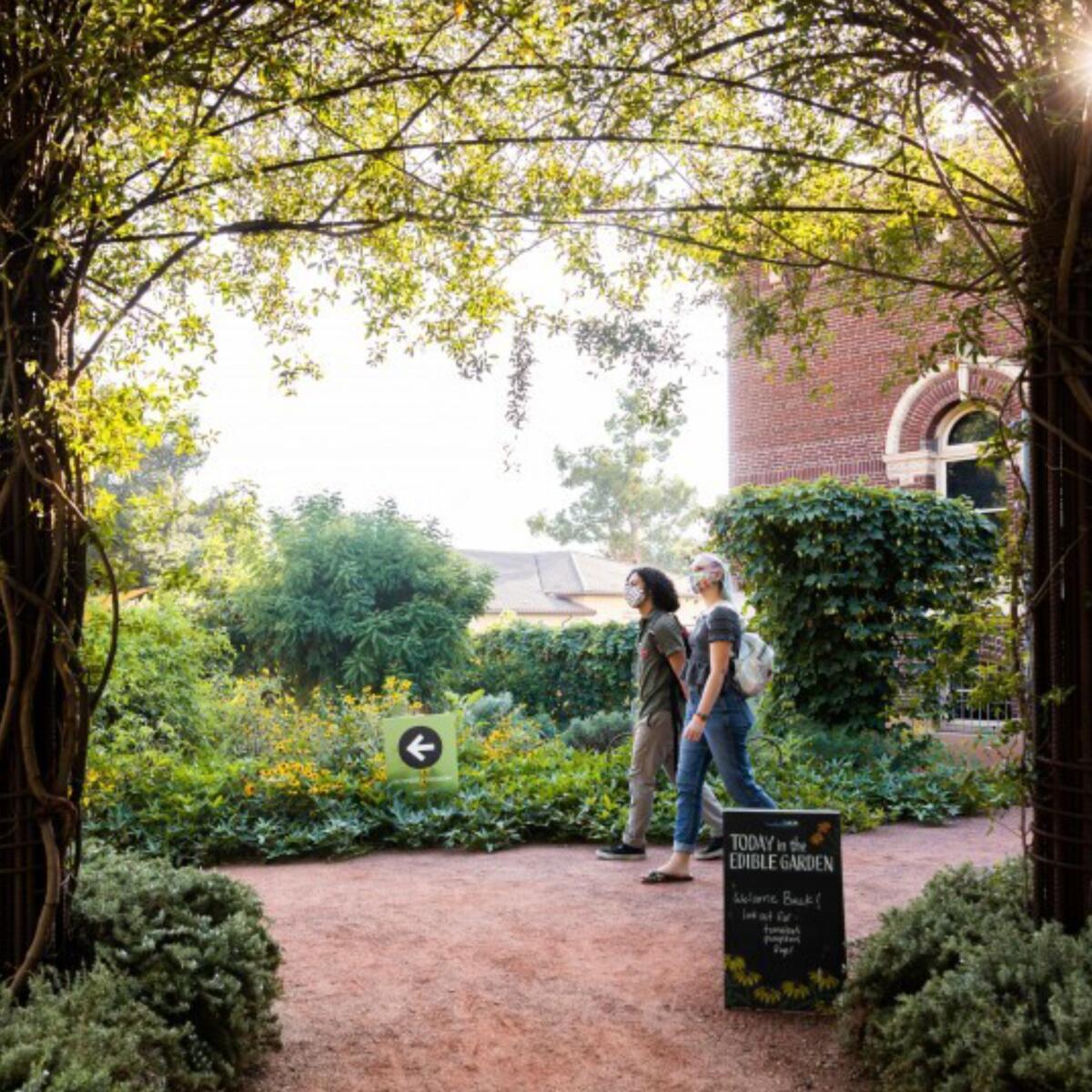
2. Listen to after-hours DJs spin tunes as you check out bugs. Summer is all about being outdoors — especially in the evenings. That’s why the Natural History Museum of L.A. County in Exposition Park has invited DJs to perform in the nature gardens. After-hours music from 5 to 8 p.m. will feature DJ Phatrick on July 30 and Red Light Vinyl on Aug. 6. The Butterfly Pavilion (open until 7 p.m.) and the museum remain open later too, for those who want to “meet their tiny neighbors” at the exhibit “Spiky, Hairy, Shiny: Insects of L.A.” Walk-up tickets cost $15 for adults, plus $6 for the Butterfly Pavilion or 3-D films. More info here.
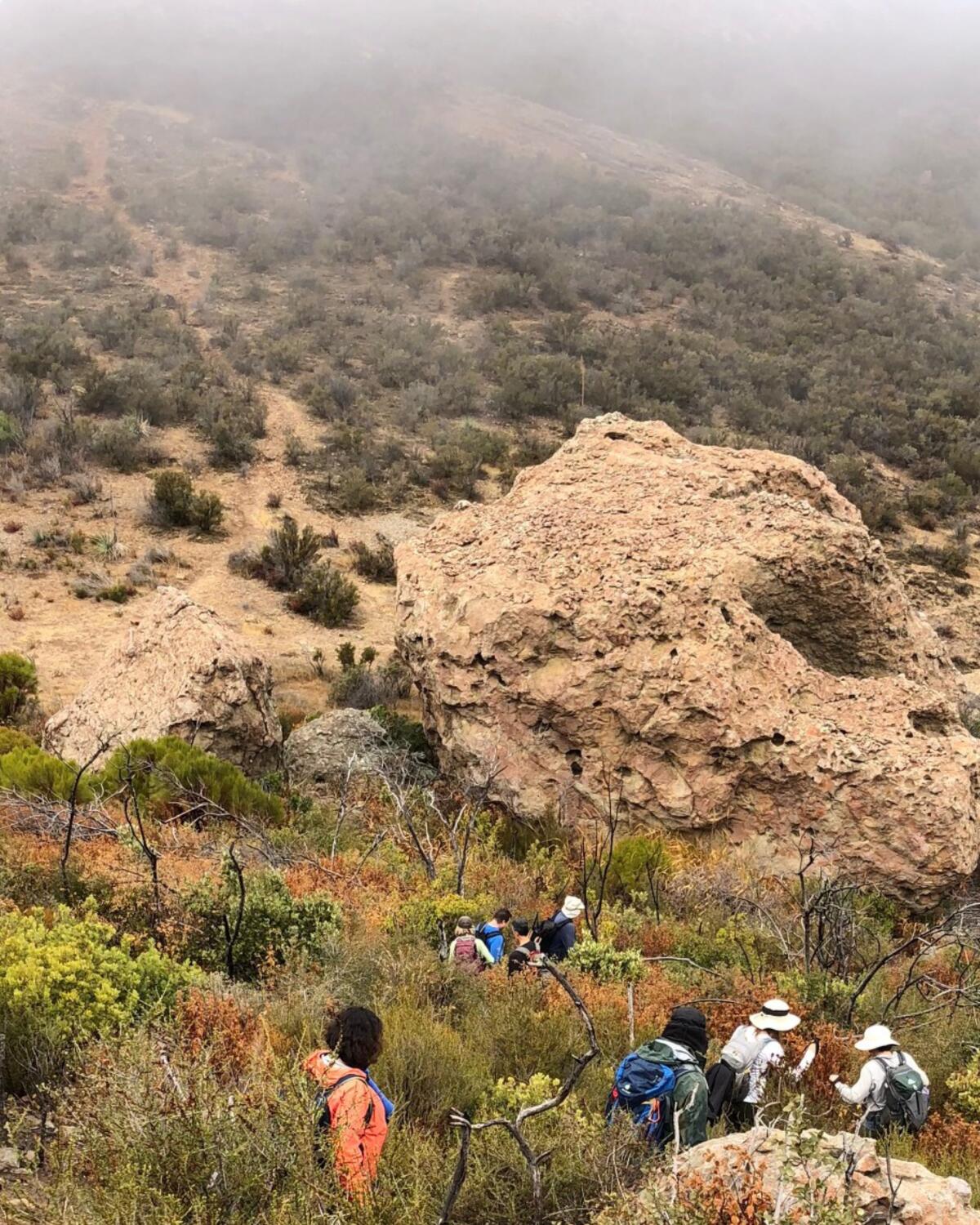
3. Want to hike but don’t want to go alone? Hit the trails with Sierra Club. Each year the Angeles Chapter of the Sierra Club leads thousands of hikes in Southern California at all levels of difficulty — from easy beach walks (there’s one at 9:30 a.m. Aug. 1 in Ventura) to stair walks to tough peak climbs to backpacking trips. They are usually free, open to the public and a good, safe way to learn local trails. Sierra Club recently resumed organized group hikes led by trained volunteer leaders. Group hikes had been canceled for more than a year because of the COVID-19 pandemic. (Full disclosure: I’m a longtime Sierra Club leader.) Check the schedule of activities for hikes on just about every day of the week.

4. Write an anthem or poem dedicated to wildlife. What would a mountain lion or a butterfly say about struggles they face in sharing the planet with us? That’s the idea behind the If I Was Wild challenge, which asks rappers, poets and musicians to create original works from an animal’s perspective. Watts hip-hop musician Warren Dickson is leading the campaign aimed at making all of us more aware of the wild animals killed on our roadways each year. The winner receives $1,000 and will be featured at the P-22 Day Festival in L.A. in October. The challenge is sponsored by the National Wildlife Federation’s SaveLACougars campaign, which is working to build a wildlife corridor over the 101 Freeway in Agoura Hills; 3rd Rock Hip Hop and Big Picture Anthems. Details here on how to submit your entry.
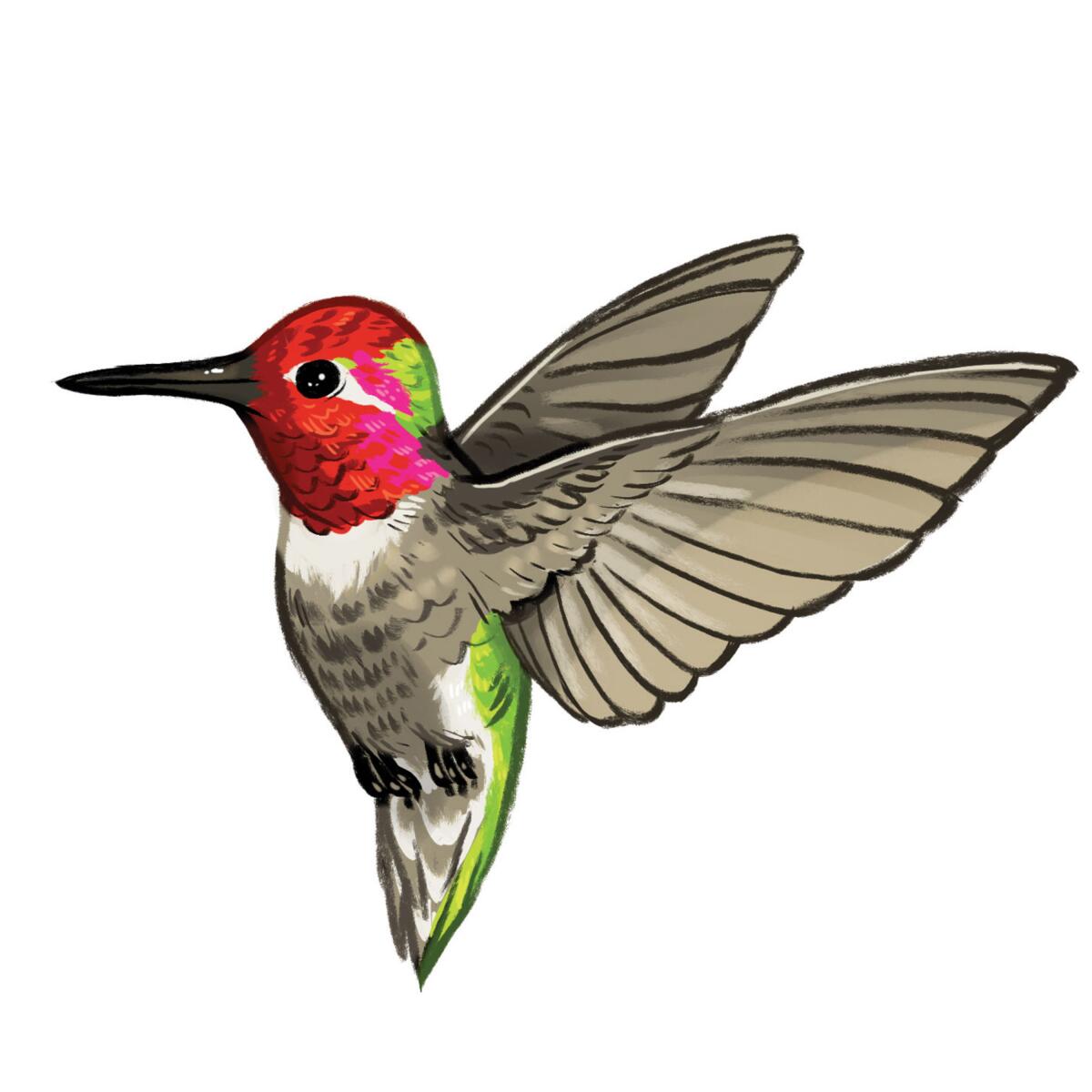
5. Ever try to photograph hummingbirds? Let a pro show you how. Hummingbirds are natural hurriers. They flit, stop and take off so quickly you might think you imagined seeing them. Learn tips and tricks of snapping these little birds by putting this event on your August calendar. Photographer Steve Kayewill host a workshop at 10 a.m. Aug. 14 at Roger’s Gardens nursery in Corona del Mar ($10, with $5 donated to a local Audubon Society chapter). Read more about this event and others on our green-thumb calendar.
The red flag

Yosemite has a bear problem — and it’s not the bears who are the problem. It’s us. A ranger wrote a moving Facebook account of finding a bear cub killed by a vehicle inside the park. The mother stood guard over the body. “It’s a new cub — couldn’t be much more than 6 months old, now balled up and lifeless under a small pine tree. For a moment I lose track of time as I stand there staring at its tiny body,” the post said. More than 78,000 Facebook users read the post, which drew more than 5,900 comments. How can we spare bears and other wildlife? The ranger wrote: “When traveling through Yosemite, we are all just visitors in the home of countless animals and it is up to us to follow the rules that protect them. Go the speed limit, drive alertly, and look out for wildlife. Protecting Yosemite’s black bears is something we can all do.” Read the full story here.
Wild things

Speaking of bears, a woman last week received a stiff fine for leaving garbage and drinks unattended at her campsite in Wyoming’s Grand Teton National Park. The U.S. Attorney’s Office in Wyoming wrote in a statement: “Individuals camping in the area took photos and videos of the grizzly bear while it was in ... [the] campsite rummaging through the trash and other food items. The campground contained multiple warning signs about bears and proper food storage as well as bear boxes in which food and other items could be stored.” The 50-year-old woman from Idaho was fined $5,826.99 for the cost of moving the bear, which involved tranquilizing and collaring the animal, to another part of the park.
There are no grizzlies in California, but there are black bears that need protection from our carelessness. California has done a good job of outfitting bear-prone campgrounds in the Sierra and elsewhere with metal boxes designed to keep bears wild — as long as we are vigilant about using them. The idea is to lock away food, beverages, garbage and anything with a scent (like toothpaste and creams) so bears will eat their wild food instead of yours. A bear that associates humans with easy-to-swipe food could become a repeat offender and may need to be killed if it becomes a threat to people. When you’re in bear country, read all posted signs, follow the rules (bear-proof canisters are required in many back-country areas) and never leave food in your tent.
Know this
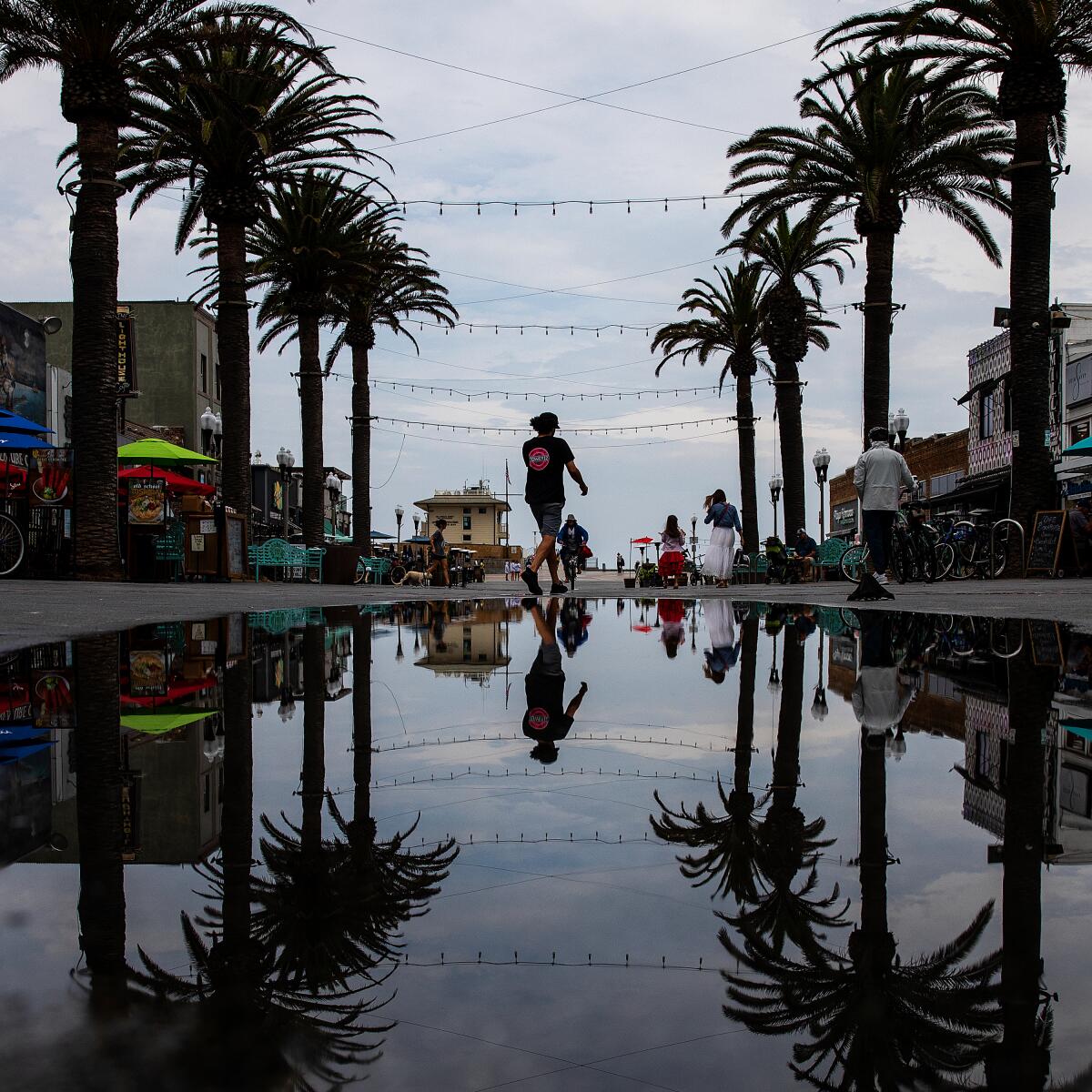
A few years ago, I was hiking to San Bernardino Peak from Angelus Oaks, Calif., when the sky clouded up. It was August, 90 degrees and sticky at the trailhead, and the clouds started to look threatening. I thought: “Oh, I’ve got rain pants and a jacket. No problem.” What seemed like seconds later, the skies opened, thunder roared, lightning crackled, hail pelted (hurting my head, despite my ball cap covered with the hood of my jacket) and the trail I was on turned into a mud slurry. It was unrelenting.
That was my encounter with monsoon season in Southern California. Yep, it’s a thing from July through September. The steamy deluges associated with countries such as India play out over the Southwest when hot temperatures meet very dry air. Thunderstorms, lightning, heavy rains and flash floods are the result. Arizona and New Mexico receive about 70% of their total annual rainfall during this time. SoCal picks up some wet stuff, but nothing like its winter totals. However, you could be surprised (like I was) when the deluge hits. Earlier this week rain fell at Mt. Baldy and other spots around SoCal. “When thunder roars, head indoors!” the National Weather Service warned Angelenos last Sunday. Just a reminder to keep your eye on mountain weather before you head out.
Made it!
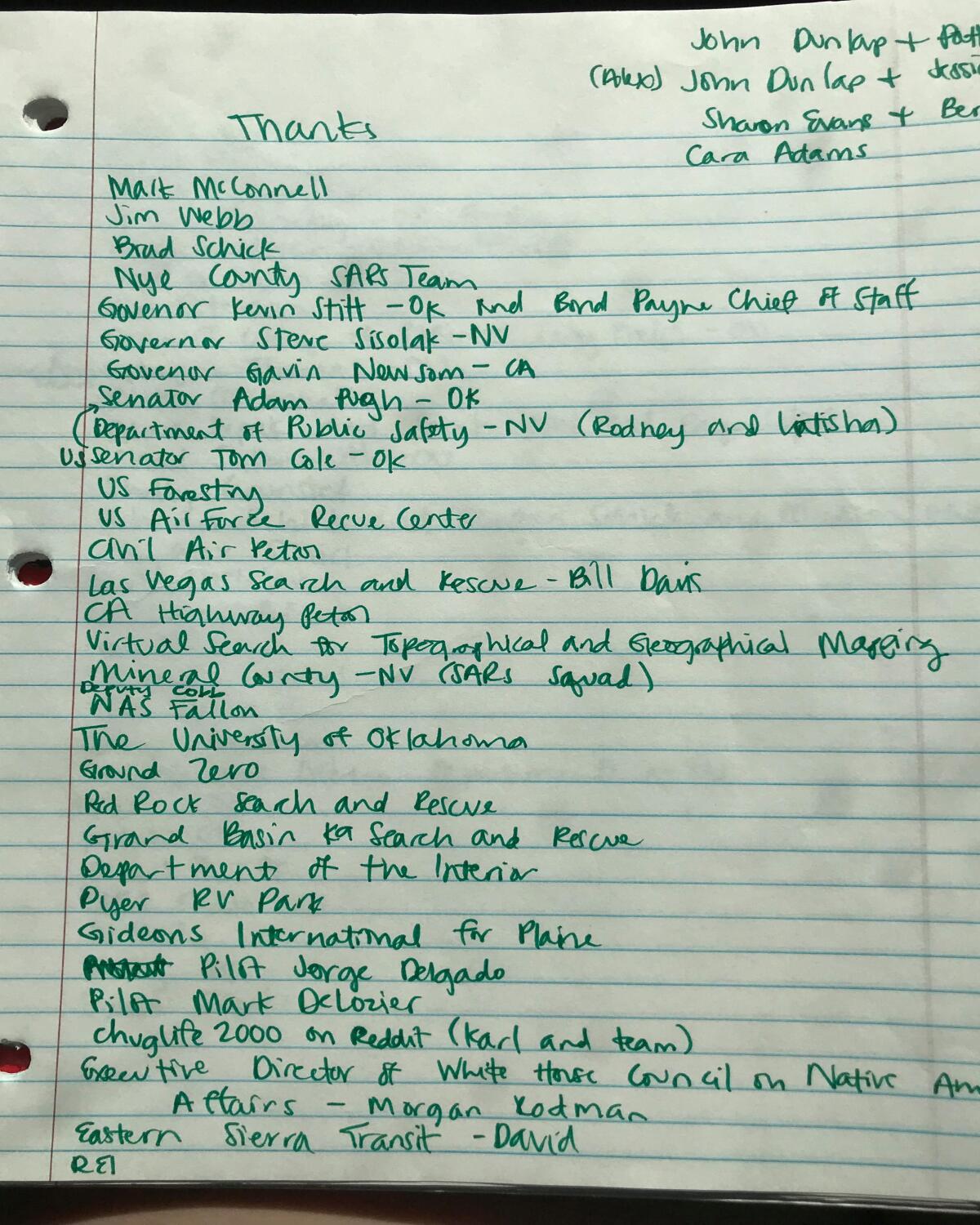
No one has to tell University of Oklahoma professor Ronald Bolen how lucky he is. Earlier this month, he went missing for four days after summiting 13,146-foot Boundary Peak in the White Mountain Wilderness, just over the Nevada border about six hours northeast of L.A. Two things struck me about what happened, other than the marvel of him being found by friends who were looking for him. According to this KFOR news account, Bolen thought about writing goodbye notes to his loved ones. That must be a dark place to go to while trying to remain hopeful about being found. The second thing I don’t think I have ever seen after a rescue: Bolen filled two pages of lined notebook pages with the names of people and agencies he needed to thank. “If I had three more lifetimes, I probably wouldn’t be done thanking people,” he told KFOR. Check out the story and the photos of Bolan’s thank-you list.
P.S.
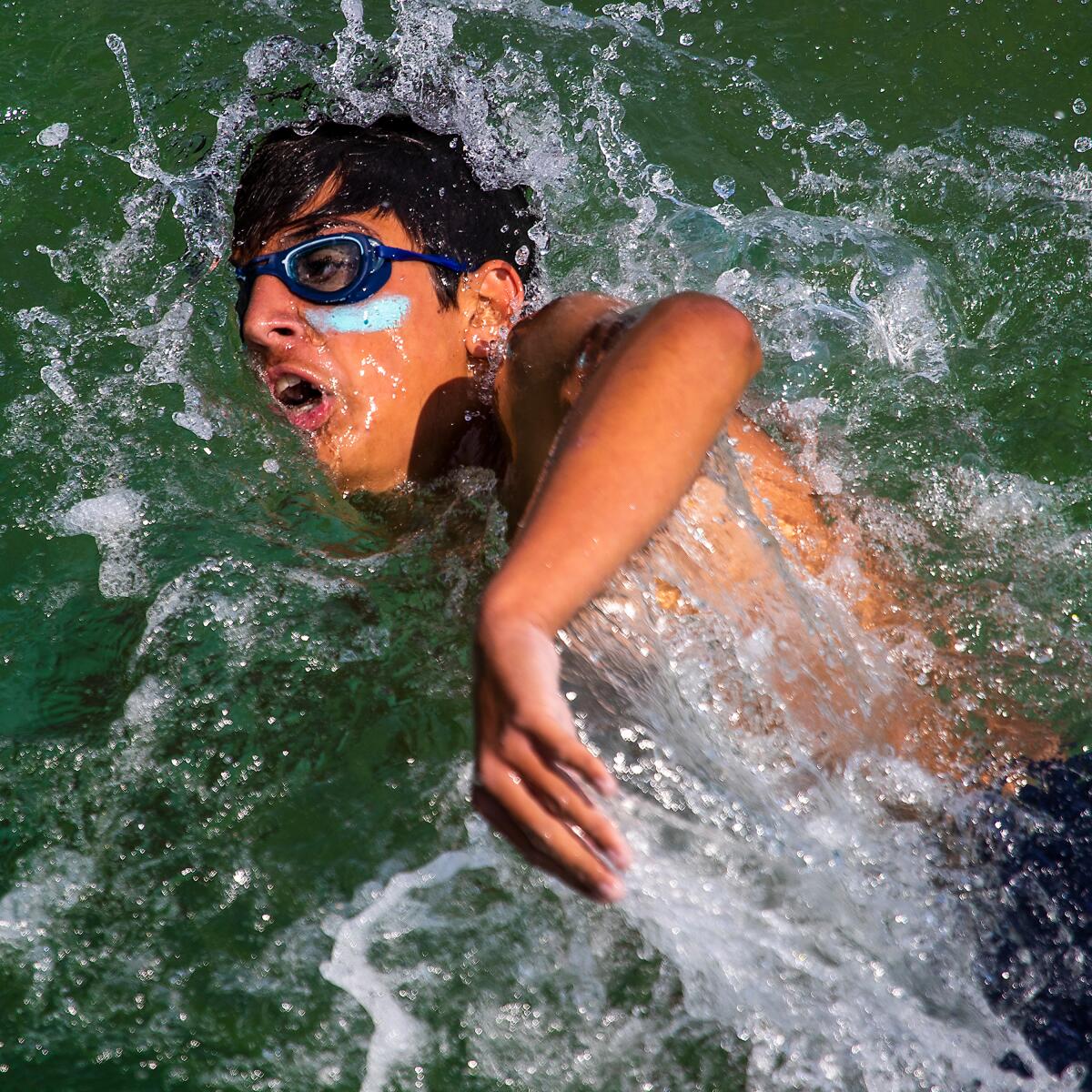
These kids are all right — and out to save you. Times photographer Allen J. Schaben captured the work and joy of participants in L.A. County’s Junior Lifeguards program this summer. The 9- to 17-year-olds learned life-saving techniques and CPR instruction as well as fitness and ocean safety. The final test? Eighteen kids who completed the course took a victory jump off the Hermosa Beach Pier. Here are photos of the splashy finale.

Bye-bye, Santa Monica. L.A. Marathon runners for the last 11 years have left from Dodger Stadium and finished amid cool breezes at the Santa Monica Pier. But that won’t happen this year. The in-person 2021 race, rescheduled for Nov. 7 because of the pandemic, will shift the finish line to Avenue of the Stars in Century City. The route turns around at Mile 22 and backtracks in what’s called the Stadium to the Stars run. Last year an official told The Times the change allows organizers to have more room at the finish line for VIPs, elite athletes as well as running clubs and charities that sponsor running groups. Here’s a map of the modified 2021 course.
Send us your thoughts
Share anything that’s on your mind. The Wild is written for you and delivered to your inbox for free. Drop us a line at TheWild@latimes.com.
Click to view the web version of this newsletter and share it with others, and sign up to have it sent weekly to your inbox. I’m Mary Forgione, and I write The Wild. I’ve been exploring trails and open spaces in Southern California for four decades.

Sign up for The Wild
We’ll help you find the best places to hike, bike and run, as well as the perfect silent spots for meditation and yoga.
You may occasionally receive promotional content from the Los Angeles Times.




